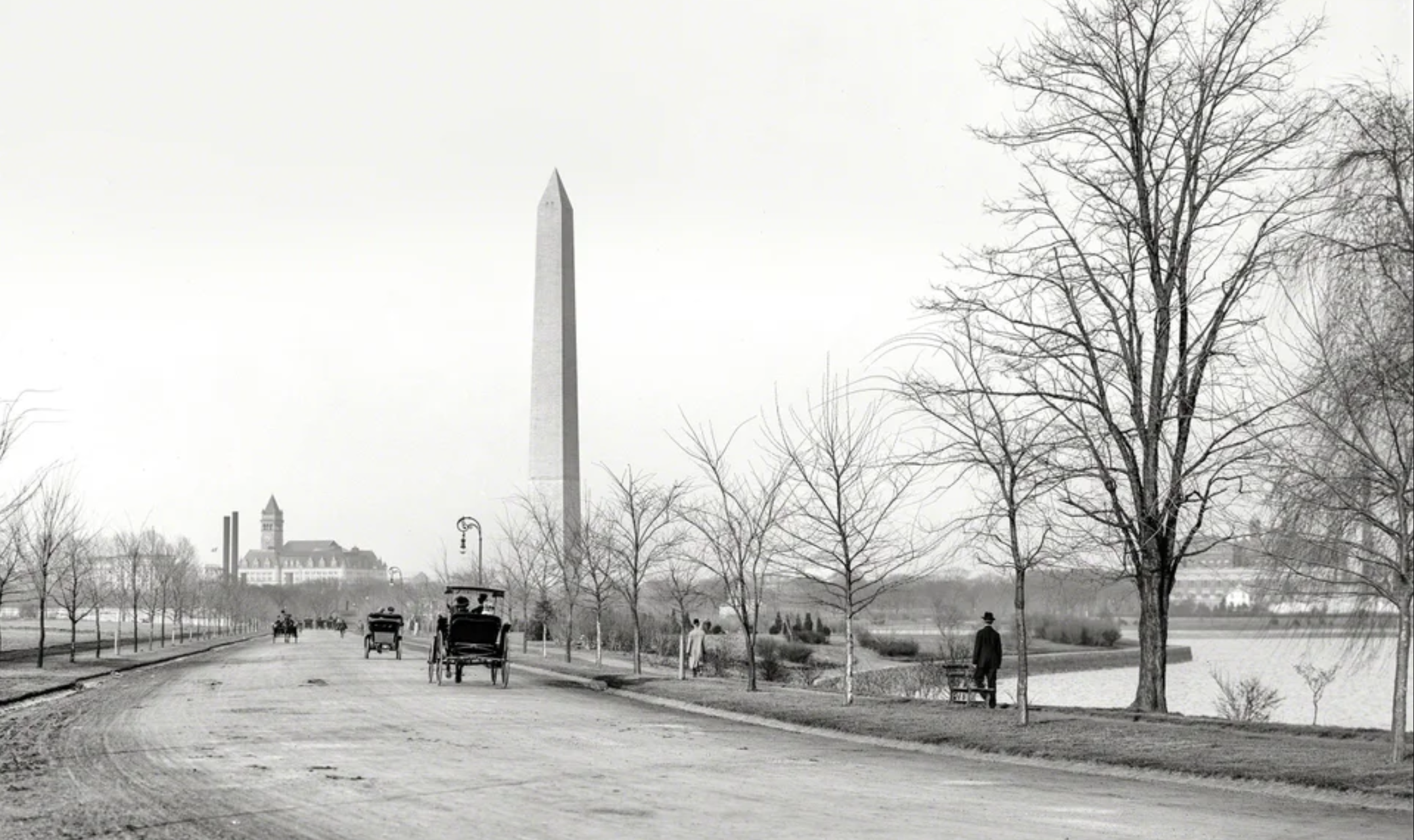|
Today's Opinions, Tomorrow's Reality
Tyranny of the Automobile By David G. Young Washington, DC, March 31, 2020 -- Explosive growth in motor vehicle traffic destroyed century-old plans for recreational parkways around the National Mall.
When the Army Corps of Engineers finished dredging a channel in the Potomac River 120 years ago, it was the realization of a dream. Gone were the swamp flats that gave Washington DC its infamous nickname. In exchange, the city had a newly navigable shipping channel and hundreds of new acres of land between the Washington Monument and the river. These lands were designed as grand parks in 1902 by the McMillan Commission. The planners foresaw formal parkways, gardens and recreational areas stretching from the U.S. Capitol to the proposed Lincoln Memorial. While not all of it was realized, it foresaw the monumental city that Americans know today.1 But not everything worked out as planned. When the Army Corps of Engineers built the first macadam road past the Tidal Basin in 19082, it was typically shared by horses, carriages, bicycles, and pedestrians. At the time the McMillan Commission began planning the Mall in 1901, there were only 14,800 registered motor vehicles in the whole of the United States. But by the early 1990s, this would grow to over 132 million.3 This explosive growth in the automobile would soon destroy these beautiful plans. Washington DC had been laid out in 1797 for pedestrians and carriages. By the time the city was expanded down the Mall, bicycles and streetcars were part of the mix. Nobody then imagined hundreds of thousands of suburban commuters would drive automobiles into and out of the city each day, but they came anyway. More and more cars kept coming, looking for any way around the relentless traffic. Those quiet recreational parkways along the Mall were irresistible ways to and from the suburbs. The onslaught turned them into de-facto expressways. That idyllic macadam parkway is now part of traffic-choked Independence Avenue, where commuters from Virginia speed down the road in packs gated by stoplights. Commuters from Maryland use the roadway, too, rounding the corner by the Lincoln Memorial to the Potomac Parkway. That once idyllic early 20th century recreational drive has been destroyed as well. The packs of speeding vehicles make it nearly impossible for pedestrians to pass without a long wait at designated crosswalk signals. The park roads are equally hazardous to bicycles, leading them to crowd with the pedestrians on the sidewalks. Then, on March 22 of this year, residents of DC got a welcome reprieve. Fears of a growing coronavirus epidemic and crowded conditions for visitors to blooming cherry trees on the Tidal Basin led the city government to close off all area roads to motor vehicles.
That Sunday, for one of the only times in decades, Independence Avenue and Potomac Parkway reverted to their intended purpose. Pedestrians strolled the parkway without fear of being hit. Bicyclists rode freely without risking being crushed. Gorgeous vistas, designed to be savored rather than ignored in a blur, could finally be enjoyed once again. The view of the Washington Monument and Old Post Office tower could be seen from Independence Avenue, just like 110 years ago. Just up the hill, the green expanse of the Mall, the Tidal Basin and the Washington Monument was visibly tranquil. Similarly, the glistening waters of the Potomac and General Lee's House could be seen in peace across the river from the Potomac Parkway, without engine noise or smog. It is unfortunate that it took a terrible pandemic to bring this day after over a century. The reprieve, sadly, would be short lived. Continued crowds by the Tidal Basin's cherry trees, with visitors congregating at unsafe distances, led the city to block the area to pedestrians and bicyclists as well.4 And, tragically, there is no thought to returning the parkways to the people once the pandemic is over. Once the parkways open up again, they will once again be the exclusive domain of speeding motor cars. The tyranny of the automobile, which strangles the capital city's glorious Mall on all sides, shows no end in sight. Notes: 1. Gutheim, Frederick, Worthy of the Nation, 2006 3. Federal Highway Administration, State Motor Vehicle Registrations by Years, 1900 - 1995, April 1997 4 WTOP, Coronavirus spread concerns close major segment of National Mall, roads around Tidal Basin, March 22, 2020 |




